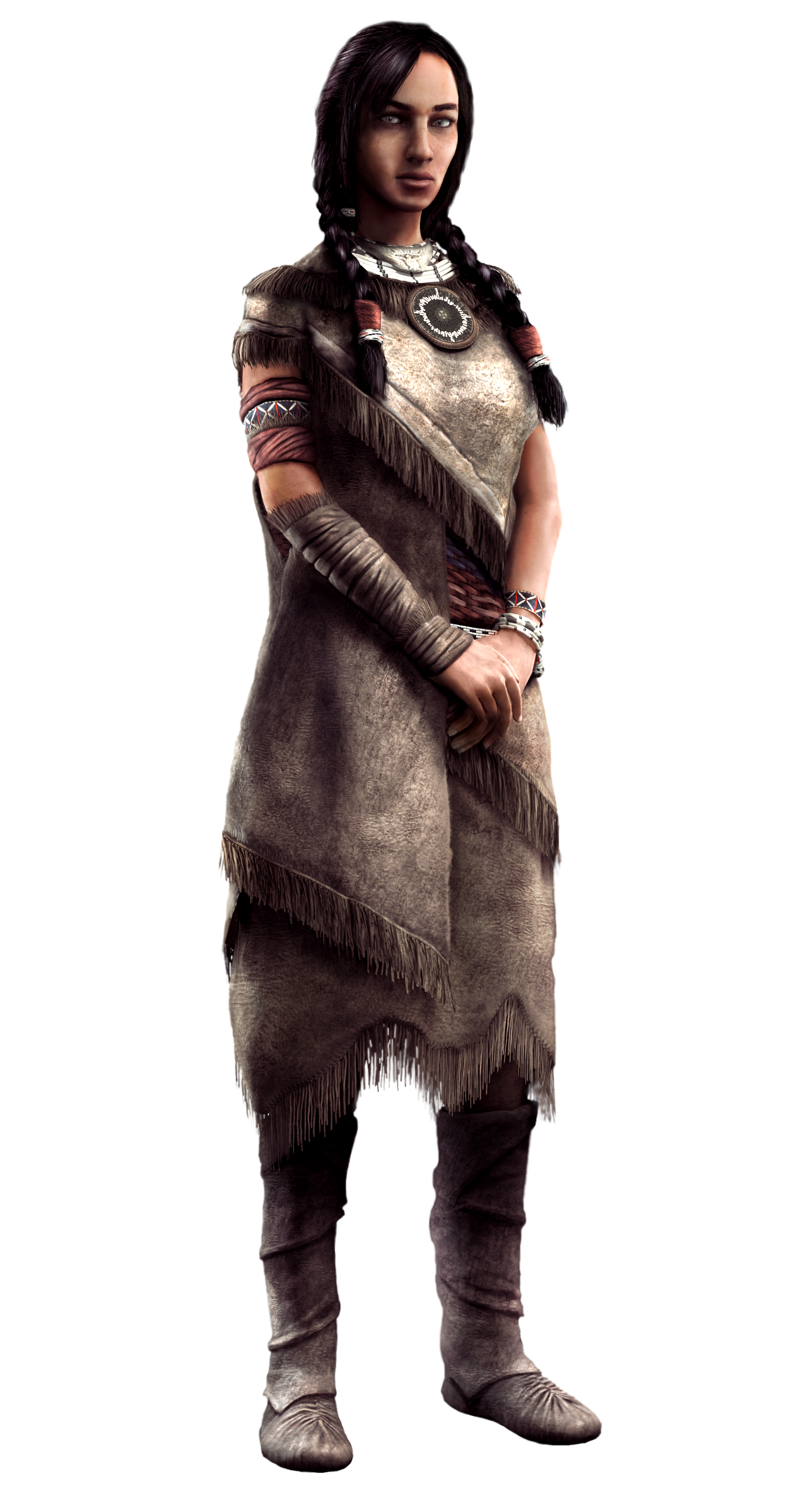In the preceding pages, one may notice that all of the characters I have spoken about are male. This is not an oversight on my part. The writers apparently thought there was little room for women in these stories, especially Native American women, laced as they are with violent conflict which traditionally privileges males. All for Liberty, America, Turn: Washington’s Spies, Washington the Warrior, The American Revolution, and Drums Along the Mohawk all have zero female American Indian representation. In Liberty’s Kids, Native American women are present in episode 27 and 31 but only as scenery; none of the male characters interact with them at all (unlike a main character who is a British girl). Sign of the Otter has a couple lines for Tekhane’s partner, and a few other women are present in Tekhane’s village, but this makes up a tiny minority of the screen time and narrative importance, especially after Tekhane and Todd leave on their mission.
There are two minor female characters in ACIII. The first is Kaniehtí:io (Kaniehtiio Horn), mother of Ratonhnhaké:ton, who plays a significant role in the prologue of ACIII. She becomes involved with the machinations of Haytham Kenway (Adrian Hough) first by wanting nothing to do with him. He is able to convince her to at least listen to him by rescuing some of Kaniehtí:io’s people from British incarceration. She is presented as a strong, capable woman who knows what her goals are and who has a stubborn disinclination to work with this British man that she initially treats dismissively. She is portrayed as being skilled in the outdoors and in hand to hand combat, along with a no-nonsense pragmatic demeanor to go along with her intelligence. She is, unfortunately, killed to provide Ratonhnhaké:ton with the revenge motivation that propels him through the story of ACIII. One of the classic tropes in Westerns is that Native women who become intimately involved with white men must be killed in order to free the white man from her dangerous corrupting influence, or to narratively punish her for miscegenation.10 I do not believe that Kaniehtí:io is killed for these classic Western tropes, since Haytham is not the hero of the story. Haytham is, in fact, one of the primary antagonists, second only to Charles Lee (Neil Napier), who is the person Ratonhnhaké:ton believes is responsible for Kaniehtí:io’s death. It is this revenge story that is at the heart of ACIII, around which the events of the American Revolution are woven.
Left: Kaniehtí:io. Right: Oiá:ner. Image credit: Assassin’s Creed fandom wiki: https://assassinscreed.fandom.com/wiki/Kaniehtí:io and https://assassinscreed.fandom.com/wiki/Oiá:ner
The other minor female American Indian character of note in ACIII is Oiá:ner (Mylène Dinh-Robic), an elderly wise woman in the village who counsels a young Ratonhnhaké:ton. He contemplates her advice seriously when she advocates for him to stay in their village and help protect their people from within, but Ratonhnhaké:ton decides he must leave and protect their people from without. Oiá:ner gives him her blessing, respecting his freedom of autonomy, and he sets off on his Western quest to avenge the death of his mother. To Ubisoft’s credit, Oiá:ner does not appear to fit into a stereotype more serious than “old wise woman,” yet no further character development occurs that may have pushed her towards other existing stereotypes.
10. Marubbio, 7-8, 17.


